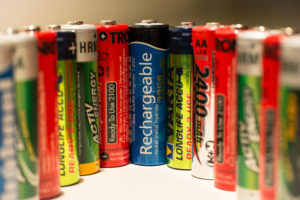More and more companies are beginning to realize that consumers are no longer just buying products. In this day and age, a customer can walk down a grocery store aisle, pick up a ketchup bottle and run a quick Google search that will turn up everything from a company’s profit and loss statements, to how many jobs they’ve created recently, and even how many wives a CEO has had. The market is such that the strength of an individual’s personality alone can spawn big business; music superstar Rihanna, for example, has a clothing line, a cosmetics collection, and a record company. Consumers aren’t buying products anymore. They’re buying an image, a lifestyle, a world-view.
Alarming headlines that speak to the effects of climate change, from heat waves to unusual weather patterns, has made environmental responsibility an attractive quality to consumers. They require that companies they support actively try to make the world a better place and many companies are heeding the call. Facebook has just announced that it aims to procure 100% of its electricity from renewable sources by 2020. It isn’t alone either, especially amongst tech companies in Silicon Valley, which likes to position itself on the leading edge on all fronts. Apple already hit 100% renewable energy this year and so far 2018 has been the best year yet for new corporate contracts with renewable energy suppliers.

![]()
Even state and local governments are joining the craze. Lawmakers in California recently passed S.B. 100, which mandates that California hit 100% renewable energy by 2045. Though the goal is laudable and will assuredly place California at the head of the pack in terms of clean energy and the battle against climate change, some analysts predict that it will also put the Golden State on the track to fiscal ruin. Californians already pay 15.23 cents per kilowatt hour- a rate significantly higher than the national average of 10.27 cents – and this push to clean energy will only make their power bill higher. This is because renewable energy is an on-demand sort of animal. When the sun is shining, solar energy is all you need. When the wind blows, turbines will make your world turn. However, when the sun sheepishly hides behind the clouds and an uneasy stillness hangs in the air, there is a noticeable lack of options for storing electricity in large capacities.
As mentioned in a previous swrm article, California lawmakers are hoping to convert the Hoover Dam into a de facto “battery”. The potential electricity-generating energy of water is held at the ready until it’s needed; the water is then undammed, allowed to move through the turbines, and provides a burst of energy to power AC unites during hot summer nights. Other methods of storing electricity have been developed including commercial grade batteries, but they tend to be too pricey to be viable on a large scale. As of now, pumped hydroelectric energy storage is responsible for over 94% of energy storage worldwide, but stored energy is far from being the industry norm.
Most energy grids rely on “peaker plants” to meet periods of higher demand for electricity. The generators of peaker plants are only turned on when needed, so the wattage comes at a higher price, both on a brass tax dollars-and-cents sense, as well as on an environmental level. Peaker plants run on fossil fuels, which will do the job, but isn’t a permanent solution for obvious reasons. No- the future demands innovations in storage technologies if going 100% renewable is to become the industry standard rather than the practice of only a few exceptional companies.
In the meantime, concerned consumers are driving the trend towards going fully renewable. The demand for sustainable energy will lead to innovation eventually, but for those consumers who are beyond concerned, whose cares border on the verge of anxiety, a letter to a local congressman might encourage federal spending on research and development of energy storage solutions. Also, there are several lists out there that rank companies according to their environmental footprint if you’d like to make sure your dollars are ending up in the right pockets.


